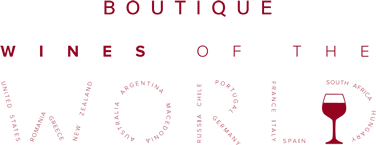Lorem ipsum 1
Lorem ipsum 2
Lorem ipsum 3
Toggles
The Chianti DOCG covers all the Chianti wine and includes a large stretch of land encompassing the western reaches of the province of Pisa near the coast of the Tyrrhenian Sea, the Florentine hills in the province of Florence to the north, to the province of Arezzo in the east and the Siena hills to the south. Within this regions are vineyards that overlap the DOCG regions of Brunello di Montalcino, Vino Nobile di Montepulciano and Vernaccia di San Gimignano. Any Sangiovese-based wine made according to the Chianti guidelines from these vineyards can be labelled and marked under the basic Chianti DOCG should the producer wish to use the designation. Within the Chianti DOCG there are eight defined sub-zones that are permitted to affix their name to the wine label. Wines that are labeled as simply Chianti are made either from a blend from these sub-zones or include grapes from peripheral areas not within the boundaries of a sub-zone.
1Lorem ipsum 1
2”Lorem
3”Lorem
4”Lorem
Collapsed toggles with counters
The soil in the north is richer and more fertile with more galestro, with the soil gradually becoming harder and stonier with more albarese in the south. In the north, the Arno river can have an influence on the climate, keeping the temperatures slightly cooler, an influence that diminishes further south in the warmer Classico territory towards Castelnuovo Berardenga. Chianti Classico are premium Chianti wines that tend to be medium-bodied with firm tannins and medium-high to high acidity. Floral, cherry and light nutty notes are characteristic aromas with the wines expressing more notes on the mid-palate and finish than at the front of the mouth. As with Bordeaux, the different zones of Chianti Classico have unique characteristics that can be exemplified and perceived in some wines from those areas. According to Master of Wine Mary Ewing-Mulligan, Chianti Classico wines from the Castellina area tend to have a very delicate aroma and flavor, Castelnuovo Berardegna wines tend to be the most ripe and richest tasting, wines from Gaiole tend to have been characterized by their structure and firm tannins while wines from the Greve area tend to have very concentrated flavours.
1Lorem ipsum 1
2”Lorem
Style 3 & icon left
Since 1996 the blend for Chianti and Chianti Classico has been 75–100% Sangiovese, up to 10% Canaiolo and up to 20% of any other approved red grape variety such as Cabernet Sauvignon, Merlot or Syrah. Since 2006, the use of white grape varieties such as Malvasia and Trebbiano have been prohibited in Chianti Classico. Chianti Classico must have a minimum alcohol level of at least 12% with a minimum of 7 months aging in oak, while Chianti Classico’s labeled riserva must be aged at least 24 months at the winery, with a minimum alcohol level of at least 12.5%. The harvest yields for Chianti Classico are restricted to no more than 7.5 t/ha (3 tonnes per acre). For basic Chianti, the minimum alcohol level is 11.5% with yields restricted to 9 t/ha (4 tonnes per acre). The aging for basic Chianti DOCG is much less stringent with most varieties allowed to be released to the market on 1 March following the vintage year. The sub-zones of Colli Fiorentini, Montespertoli and Rufina must be aged for a further three months and not released until 1 June. All Chianti Classicos must be held back until 1 October in the year following the vintage.
